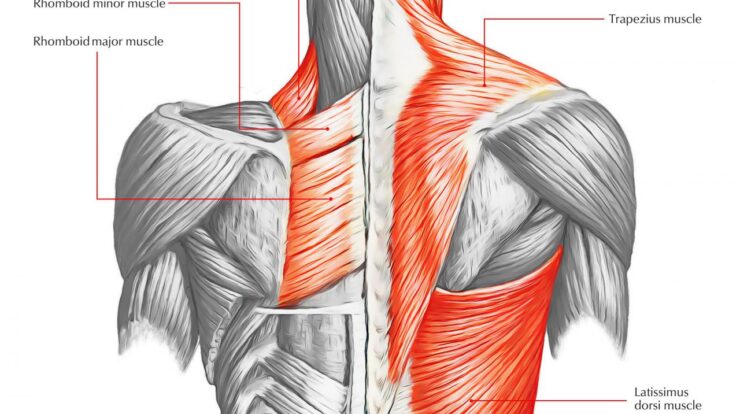
How to handle his snake yumi sin and fit kitty – Snakes can make great pets, but they require special care and handling. In this guide, we’ll teach you everything you need to know about how to handle your snake Yumi Sin and fit kitty safely and effectively.
We’ll cover everything from how to hold and move your snake to how to train it to be calm and comfortable with handling. We’ll also provide tips on feeding, housing, and healthcare for your snake.
How to Handle His Snake Yumi

Proper handling techniques are crucial for both your safety and the well-being of your snake. Always approach Yumi calmly and with respect, avoiding sudden movements that could startle her.
Hold and Move the Snake, How to handle his snake yumi sin and fit kitty
Gently lift Yumi from her enclosure using both hands, supporting her body firmly. Avoid squeezing or applying excessive pressure. Hold her close to your body to provide a sense of security. When moving her, support her entire length, keeping her body straight and elevated off the ground.
Yo, check it, handling your snake Yumi Sin and fit kitty is like stepping up your insurance agent game. Just like you need to keep your snake and kitty in check, you gotta boost your productivity as an insurance agent.
Check out how to increase insurance agent productivity for the sickest tips. It’s like the ultimate guide to slay the sales game and keep your snake and kitty purring.
Appropriate Handling Equipment
Using appropriate handling equipment, such as snake hooks or tongs, can enhance safety and control. Snake hooks allow you to gently guide Yumi without directly touching her, while tongs provide a secure grip for larger snakes. Choose equipment that is appropriate for Yumi’s size and temperament.
Training Your Snake Yumi
Training your snake is an important part of building a strong bond and ensuring its well-being. By following a few simple steps and using positive reinforcement, you can train your snake to be calm and comfortable with handling.
Positive Reinforcement
Positive reinforcement is a training technique that rewards desired behaviors. When your snake exhibits a desired behavior, such as staying calm during handling, reward it with something it enjoys, such as a small piece of food or a warm soak.
Training Exercises
Here are some specific training exercises you can use to build trust and reduce fear in your snake:
- Gentle Handling:Start by gently handling your snake for short periods, gradually increasing the duration as it becomes more comfortable.
- Target Training:Use a target stick or your finger to guide your snake’s movements. Reward it when it follows the target.
- Habituation:Expose your snake to different environments and experiences, such as different rooms or outdoor areas. This will help it become more comfortable with new situations.
Feeding Your Snake Yumi
Yo, listen up snake fam! Feeding your pet snake Yumi is crucial for her health and happiness. Snakes are carnivores, meaning they need to eat meat to survive. So, let’s break down what Yumi needs to stay healthy and strong.
Nutritional Needs
Yumi’s diet should be balanced, providing her with all the nutrients she needs. This includes proteins, fats, vitamins, and minerals. Live prey, such as rodents, is the best way to ensure she gets everything she needs. Frozen or pre-killed prey is also an option, but it’s important to thaw it properly before feeding it to Yumi.
Prey Size and Frequency
The size of the prey you feed Yumi depends on her age and size. As a general rule, the prey should be about the same width as the thickest part of her body. You should feed her once a week, or more often if she’s still growing.
Feeding Techniques
Here’s how to feed Yumi safely and effectively:
- Wash your hands thoroughly before and after handling Yumi.
- Place the prey in Yumi’s enclosure and supervise her while she eats.
- If Yumi doesn’t eat the prey within a few hours, remove it from the enclosure.
- Never leave live prey unattended with Yumi, as it could injure her.
Remember, feeding Yumi is an important part of being a responsible snake owner. By following these tips, you can ensure she gets the nutrition she needs to thrive.
Yo, I got my snake Yumi Sin and my kitty all chillin’, but I’m about to level up my insurance game. Check this link on how to boost my agent productivity. Then, I’ll be slitherin’ and purrin’ all the way to the bank, with Yumi Sin and my kitty chillin’ by my side.
Housing and Environment for Yumi

Creating a suitable home for your snake is essential for its well-being. Snakes have specific environmental requirements that must be met to ensure their health and happiness.
Enclosure Design
Yumi’s enclosure should be large enough to allow her to move around comfortably. It should also provide her with hiding places, climbing opportunities, and a water dish. The enclosure should be made of a material that is easy to clean and escape-proof.
Temperature and Humidity
Snakes are ectothermic, which means they rely on external heat sources to regulate their body temperature. Yumi’s enclosure should have a warm end and a cool end, with a temperature gradient between the two. The warm end should be around 85-90°F (29-32°C), and the cool end should be around 75-80°F (24-27°C).
The humidity in the enclosure should be around 50-60%.
Lighting
Snakes do not require special lighting, but they do need a day-night cycle. A 12-hour light cycle is ideal, with the lights being on during the day and off at night.
Naturalistic and Stimulating Environment
Creating a naturalistic and stimulating environment for your snake can help to keep her healthy and happy. This can be done by providing her with a variety of hiding places, climbing opportunities, and things to explore. You can also add live plants to the enclosure, which will help to create a more natural environment.
Health Care for Yumi

Yo, keeping your slithery pal Yumi healthy is key. Snakes can get sick just like us, so it’s important to know what to watch out for.
Yo, check it. You wanna handle your snake Yumi Sin and fit kitty like a boss? You need to be slick and chill. You gotta keep your cool, move with grace, and know when to strike. It’s like how to increase insurance agent productivity – you gotta be sharp, stay focused, and always be ready to make a move.
So, keep your eyes on the prize, stay in the zone, and you’ll be a master snake handler and kitty cuddler in no time.
Common Health Issues in Snakes
Snakes can suffer from a range of health problems, including:
-
-*Respiratory infections
These can cause symptoms like wheezing, coughing, and nasal discharge.
-*Skin infections
Snakes can get bacterial or fungal infections on their skin, which can cause redness, swelling, and scabbing.
-*Parasites
Internal and external parasites can cause a variety of health problems, including weight loss, diarrhea, and lethargy.
-*Metabolic bone disease
Yo, check this out if you’re into snakes and cats. Here’s a dope guide on how to handle your snake Yumi Sin and your fit kitty. It’s all about keeping your pets safe and happy, so you can chill with your snake and cat homies without any drama.
This condition occurs when snakes don’t get enough calcium and vitamin D, and can lead to weak bones and fractures.
-*Abscesses
These are collections of pus that can occur anywhere on the snake’s body.
Importance of Regular Veterinary Checkups
Regular veterinary checkups are crucial for detecting and treating health problems in snakes early on. Your vet can also provide advice on nutrition, housing, and handling.
Finding a Qualified Herp Veterinarian
Not all vets are qualified to treat snakes. Look for a vet who has experience with reptiles and is certified by the Association of Reptilian and Amphibian Veterinarians (ARAV).
Handling and Administering Medications
If your snake needs medication, it’s important to handle it carefully and follow the vet’s instructions precisely. Always wear gloves when handling medications, and never give your snake medication that is not prescribed by a vet.
Closure
With a little patience and practice, you’ll be able to handle your snake Yumi Sin and fit kitty with confidence. Just remember to always be gentle and respectful of your snake, and it will return the favor.
FAQ Guide: How To Handle His Snake Yumi Sin And Fit Kitty
How often should I feed my snake?
The frequency of feeding will depend on the size and age of your snake. Young snakes need to eat more often than adult snakes. A good rule of thumb is to feed your snake once a week if it is under a year old, and once every two weeks if it is over a year old.
What should I feed my snake?
The best diet for your snake will depend on its species. In general, snakes eat rodents, such as mice and rats. You can also feed your snake frozen or live prey.
How do I know if my snake is sick?
There are a few signs that may indicate that your snake is sick. These include: loss of appetite, lethargy, difficulty breathing, and discharge from the eyes or nose. If you notice any of these signs, it is important to take your snake to a veterinarian as soon as possible.





